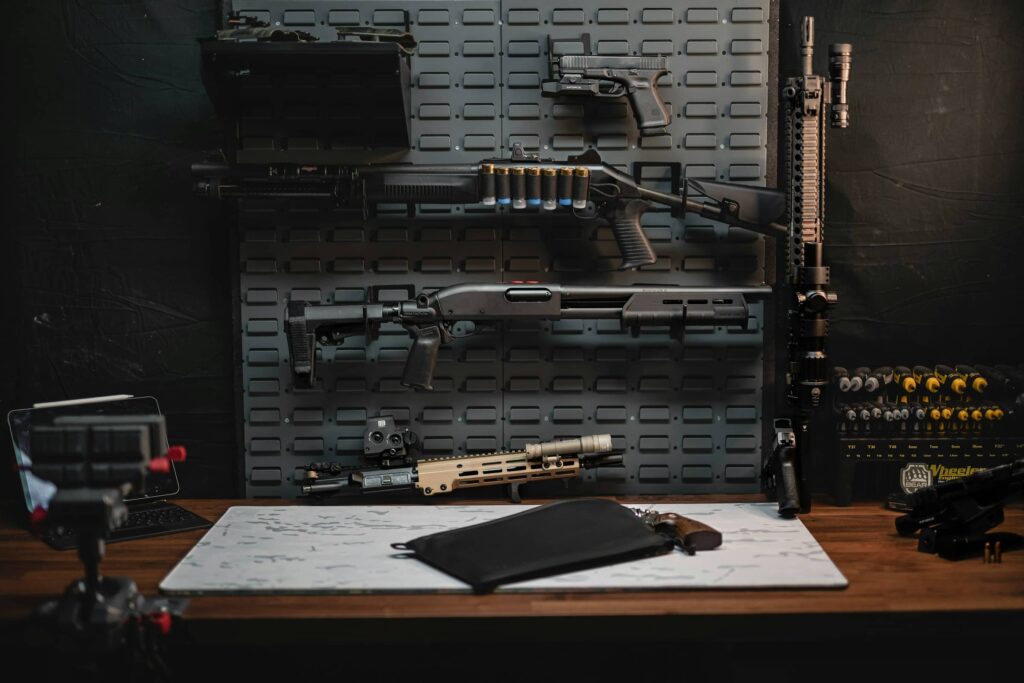
What You Should Know When Transporting Firearms in Your Truck
Table of Contents
Introduction
So you’re heading back from a range day with your range toys secured in their cases. Everything seems fine, but then you start to wonder: what should I do if I get pulled over? Whether you’re crossing state lines or just driving through your own town, gun transportation regulations can be tricky. And it’s not just about having a firearm—it’s about knowing how to carry, store, and transport it legally in your vehicle.
In this post I will break down what you need to know to stay compliant with the complex firearms laws our politicians love and avoid any unnecessary legal headaches. Whether you’re dealing with state gun laws, concealed carry in cars, or transporting a loaded firearm, we’ll cover it all.
Helpful Links:
To learn more about the legalities of self-defense in your truck, check out Understanding Vehicle Castle Doctrine: Your Rights on the Road. If you want a deep dive into U.S. gun laws then Understanding United States Gun Laws: A Comprehensive Guide is the post for you.
Federal Law: Basics of Gun Transportation
Before diving into specific state laws, I’ll start with federal law, which provides a nice foundation for firearm transportation. The Firearms Owners’ Protection Act (FOPA) protects gun owners while traveling across state lines, provided that the firearm is unloaded, stored in a locked container, and kept away from easy access (like in the trunk, not the glove compartment).
The keyword here is interstate, meaning between states. This does not include intrastate travel within your state.
This law offers protection when traveling with your guns over state lines (interstate transportation), but it’s important to remember that FOPA doesn’t shield you from arrest. It’s an affirmative defense, which means that while you can use it in court if needed, it doesn’t prevent law enforcement from detaining you. So, while FOPA is helpful, it’s not a “get out of jail free” card, especially in states with stricter state gun laws like New York and New Jersey.
Learn more about FOPA and its implications through this Perplexity AI result.
State Gun Laws and Your Truck
Each state has its own firearm laws, and what’s legal in one state might be illegal just a few miles down the road. For instance, states like Texas and Arizona are known for having more lenient laws including open carry while driving, while states like California and New Jersey impose stricter requirements, such as requiring you to unload your firearms before transporting them.
If you’re traveling across multiple states, you need to be aware of interstate gun transport rules. Some states honor firearm reciprocity agreements, which allow individuals with valid concealed carry permits to legally carry firearms in other states. However, these agreements aren’t universal, so always double-check the laws of both your home state and any state you plan to visit.
If you search “gun transport laws for [your state]”, you should find your state’s .gov page with specific rules.
Safe and Legal Firearm Storage in Your Vehicle
Whether you’re traveling with a Glock, a Weatherby Vanguard, or a SIG 552 Commando, proper storage is important to staying within the law and keeping yourself safe. Here are a few ways to securely store firearms in your truck:
- Gun Safe: A mounted gun safe designed for your vehicle is one of the most secure ways to store your firearm. Whether you install it under the seat or in the bed of your truck, it ensures your gun stays out of reach and locked up.
- Kyle Morgan, Founder of Blu Bearing Solutions and former Green Beret, shares his vehicle setup where he uses the Tuffy Box in this YouTube video.
- Gun Case: If a full gun safe isn’t an option, a locked gun case can do the trick. Make sure it’s securely locked and stored in a part of the vehicle that’s not easily accessible from the driver’s seat.
- If you are looking for a lockable hard case you have two great options: the tried and true Pelican Vault, or the high tech Vaultek LifePod.
- Vehicle Gun Racks: Though convenient, a gun rack comes with potential risks, especially regarding theft. Plus, laws vary significantly from state to state regarding the legality of using them. In states like Texas, you may be fine, but other states require guns to be out of sight, meaning a visible gun rack could get you into trouble.
- If you’ve seen Pew View’s videos on YouTube, you probably have admired his Cap Pack Sport rack which is the perfect pro level option for someone who travels frequently with multiple firearms.
- Glove Box or Center Console: In some states, it’s legal to store your firearm in your glove box or center console, while in others, this is considered an accessible location and could lead to legal issues. Always double-check your state’s specific laws around center console / glove box firearm storage before you decide where to stow your gun.
- I personally have this generic magnet mount I installed in my center console. I like it because it is slim and unobtrusive while being surprisingly strong. Make sure to get the black one unless you want red, white, and blue marks on your handgun slide!
- Also check out the StopBox Kwick Strike if you have a truck with enough space between the seat and center console. I don’t have experience with this product but it seems like people like it.
Specific Situations to Keep in Mind
There are a few unique scenarios where the rules about firearms in vehicles become even more complicated. Let’s take a quick look at some common situations:
- Commercial Vehicles: For those who drive for a living, keeping a gun in your rig can vary depending on both federal regulations and your company’s policy. Many trucking companies **cough Amazon cough**, for example, prohibit firearms in their vehicles, even if federal or state laws would otherwise allow them.
- Rental Cars: Technically, the laws for the state you are in still apply, but it’s a good idea to check with the rental company about their policies. Some rental agreements specifically ban firearms in their vehicles.
- Crossing State Lines: When driving across state lines, it’s important to know the specific rules for each state you enter, especially regarding firearm reciprocity. Even if your firearm is stored legally in one state, you could be breaking the law the moment you cross into another. Fortunately, FOPA provides some protection against overbearing state laws when passing through a state.
- Emergency Access: In situations where you might need to access your firearm quickly—such as during a carjacking or robbery—consider how accessible your gun is, but always prioritize safety (and compliance).
Firearm Transport and Legal Risks
Misunderstanding gun transportation laws can get you into trouble for something you may have never even considered. For instance, getting pulled over with a loaded or improperly stored firearm can lead to fines or even criminal charges, depending on the state.
During a traffic stop, if you have a gun in the vehicle, you need to be upfront with law enforcement and disclose what you have in your vehicle. I personally wait for them to ask about weapons in the vehicle. Remember to say “firearm(s)” and not “GUN” when talking to the officer. Their partner, who could not clearly see what is going on, might escalate the benign traffic stop when “gun” is called out.
Some states, like Arizona, require drivers to notify officers immediately if there’s a firearm in the vehicle. Others, like Texas, don’t have the same requirement. Either way, it’s always best to be polite, keep your hands visible, and follow the officer’s instructions.
Conclusion
Transporting firearms in your truck comes with both responsibilities and risks. Understanding the laws in your state and any state you plan to travel through is a good idea to stay on the right side of the law. Having the right gear (my suggestions) in combination with following state law, will make traveling much more enjoyable. For more information, consult local resources or explore USCCA’s state-by-state guide to make sure you’re transporting your firearm legally, wherever you go.
- The Right Gear for Upland Hunting - December 21, 2024
- How to Get a Suppressor in a Few Steps - December 5, 2024
- What is The Protection of Lawful Commerce in Arms Act? - November 15, 2024



